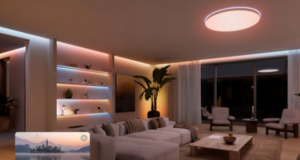
Installing a dishwasher can be more involved than it seems. While it may appear as simple as connecting a couple of hoses and plugging it in, Australian regulations require compliance with specific plumbing and electrical standards. This helps to prevent leaks, electrical hazards and costly mistakes down the track.
Whether you’re upgrading an old unit or planning a new kitchen fit-out, here’s what you need to know to get your dishwasher installed safely, legally and in line with Australian regulations.
Why installation regulations matter
Dishwashers are one of the few domestic appliances that rely on both plumbing and electrical connections. Poorly installed dishwashers can lead to water leaks, short circuits or even fire hazards.
In most cases, installation will require a licensed plumber and electrician to ensure all connections meet the relevant Australian Standards. This is not just about safety—compliant installations also help protect warranties and ensure your home remains insurable.
Electrical and plumbing requirements
Here’s a rundown of the main requirements for a compliant dishwasher installation:
- Power connection: A dishwasher must be connected to a fixed-wired switch (not just a power point) that has a contact gap of at least 3mm. It must also be protected by a 30mA RCD. The switch and power point must remain accessible after installation.
- Water supply: Dishwashers should be connected to a cold or hot water supply using the hose and dual check valve provided by the manufacturer. Plumbing connections must comply with AS/NZS 3500, and the water pressure should be at least 200kPa to ensure proper function.
- Drainage: The waste hose must be connected to either a dedicated dishwasher trap or installed using a high-loop or air-gap method to prevent dirty water from flowing back into the appliance.
- Bench and cabinetry protection: Steam and heat from dishwashers can damage cabinetry over time. The underside of the benchtop should be sealed with a waterproof material for at least 150mm on each side of the appliance.
- Ventilation: While most residential kitchens don’t require dedicated mechanical ventilation, homes with enclosed or heavily used kitchens may need to comply with AS/NZS 1668.2 for proper airflow.
DIY or professional installation?
While swapping out an old dishwasher for a new one might look easy, there are still strict rules around how water and electrical connections are made. In nearly all cases, especially with new installations, a licensed plumber and electrician must be used. They will also provide compliance certificates, which may be required when selling or insuring your home.
Compliance summary
Here’s a quick-reference table covering the core installation requirements:
| Requirement | Standard/Rule | Installed by |
| Electrical wiring | AS/NZS 3000 + RCD + fixed switch ≥3mm gap | Licensed electrician |
| Water supply & venting | AS/NZS 3500 + PCA + dual check valve | Licensed plumber |
| Drain & air gap/high-loop | Plumbing Code + trap or air-gap installation | Licensed plumber |
| Bench underside sealing | BCA – 150mm seal from dishwasher centre | Any qualified installer |
| Steam/condensation ventilation | AS/NZS 1668.2 where applicable | Licensed trades as needed |
| Compliance certificate | Required by most states/local councils | Installer (plumber/electrician) |
Final tips
- Always check the product’s installation manual—different brands may have different connection requirements.
- Measure carefully before buying. Even standard-sized dishwashers can vary slightly in depth and height.
- If you’re buying a fully integrated model, consider involving a cabinetmaker to ensure it blends properly with your kitchen joinery.
- Look for models with a high WELS and Energy Star rating to save on water and electricity bills over time.
A dishwasher is a convenience many households can’t do without, but it’s important to install it the right way. A compliant installation helps you avoid damage, maintain warranties and keep your home safe. When in doubt, bring in the professionals.





